Difficulty converting advertisements to event attendance
My Role
- UX Designer
- UI Designer
- Marketer
The Team
- 1x UI/UX Designer
- 1x Developer
My Tools
- Photoshop
- Illustrator
- XD
The Challenge
The current system for communicating college events has room to be improved, either by improving the current systems or by developing a new one. This goes for both how colleges communicate their events to students and how students communicate between each other to discuss extracurriculars.
Background
An important part of student life in college is attending extracurricular events. School events provide a place for students to come together, meet each other, and enjoy time away from classes. A key task for schools then is to inform their students about what's happening around campus. My friend and I realized there was potential to improve the college experience for both schools and their students. Colleges' traditional means of communication aren't particularly effective, and other event services aren't made with these problems in mind. The question became then:
How might we build a system of communication between schools and students in order to build a stronger community?
Research
Before attempting to create an entirely new product or solution, I started doing research to understand what the market for event planning services looked like and where we could differentiate our design. Then we could have a conversation with potential users to find some of the friction points surrounding school events.
Competitive Analysis
There is an extensive market for event related applications: Facebook Events, Meetr, Trip Advisor, Meetup, Eventbrite, just to name a few. All of these services have different offerings and ways in which they differentiate, so I did some analysis on their strengths and weaknesses to get a better understanding of their positions in the market.
Facebook Events
Strengths
- Established user base
- Good categorization/search capability
Weaknesses
- Less popular among college-age students
- Not great at searching by location
Trip Advisor
Strengths
- Planning & organizing
- Community reviews for different locations
Weaknesses
- Targeted towards tourists
- Lacks emphasis on doing things with others
Eventbrite
Strengths
- Functionality for sales
- Wide variety of events
Weaknesses
- Focused on ticketed events
- Hard-to-access location information
- Little social network capability
School software
Strengths
- Already used by many students
- Easy to add features that are relevant to the school
Weaknesses
- Unrefiend interface
- Underdeveloped functionality
Talking to Users
We talked with school administration about how they marketed their events to students. On the student side, we talked with fellow classmates to try to get an understanding for how they went about finding extracurricular activities. Here's some of the key points that seemed to keep showing up:
School Side
Heavy use of print media
Poor accesibility of marketing for students
High spending on internal marketing
Student Side
Limited use of school's marketing
Reliance on word-of-mouth and alternative communication (GroupMe, group chats, etc.)
Only attending activities planned by student organizations (Greek life, clubs)
Sticking with friend groups
Define
Now that we had an idea of the differences between the school and the students, it was time to start defining some of the goals for the project. From the research it seemed there was a breakdown of communication between the school and the students. Our initial goals were:
- Elaborate on who the product is for
- Determine important features
- Establish constraints
User Personas
There are a few different type of people that would use the service. Schools would use it as a means of communicating with their student bodies, and students would use it as a way to search for, explore, and plan things to do with friends.
Casey - The Administrator
Casey is a school administrator. She's responsible for managing the promotion of school events and activities.
Goals
- Minimizing time and effort on marketing
- Maximizing student engagment
- Accessing metrics to analyze success
Frustrations
- Low attendance
- Funds being wasted on ineffective promotions
- Difficulty changing details last minute
Bryce - The Student
Bryce is a college student. He has fun just hanging out with friends, but sometimes he and they want to go out and look for something new to do.
Goals
- Trying new things
- Being able to socialize
Frustrations
- Not being able to find the information he wants quickly
- Learning about cool events only after they happened
Goals and Constraints
After some consideration we felt that developing a standalone application that was unassociated with the school or another software was ideal for our situation. This would provide a solution that could theoretically be expanded upon much more easily, say, to apply to a different school. We explored the idea of building a social media side to the solution, wherein users could better interact with each other, form groups, and make/edit their own events. This became out of scope before too long, and we decided that focusing on the main issue of schools posting events and students discovering them would be best for a minimum viable product.
Solution
I started building some lofi prototypes to get a feel for how some of the interactions and visualizations would look. I wanted to have a view of a map because of how much more visual it was compared to a list view.
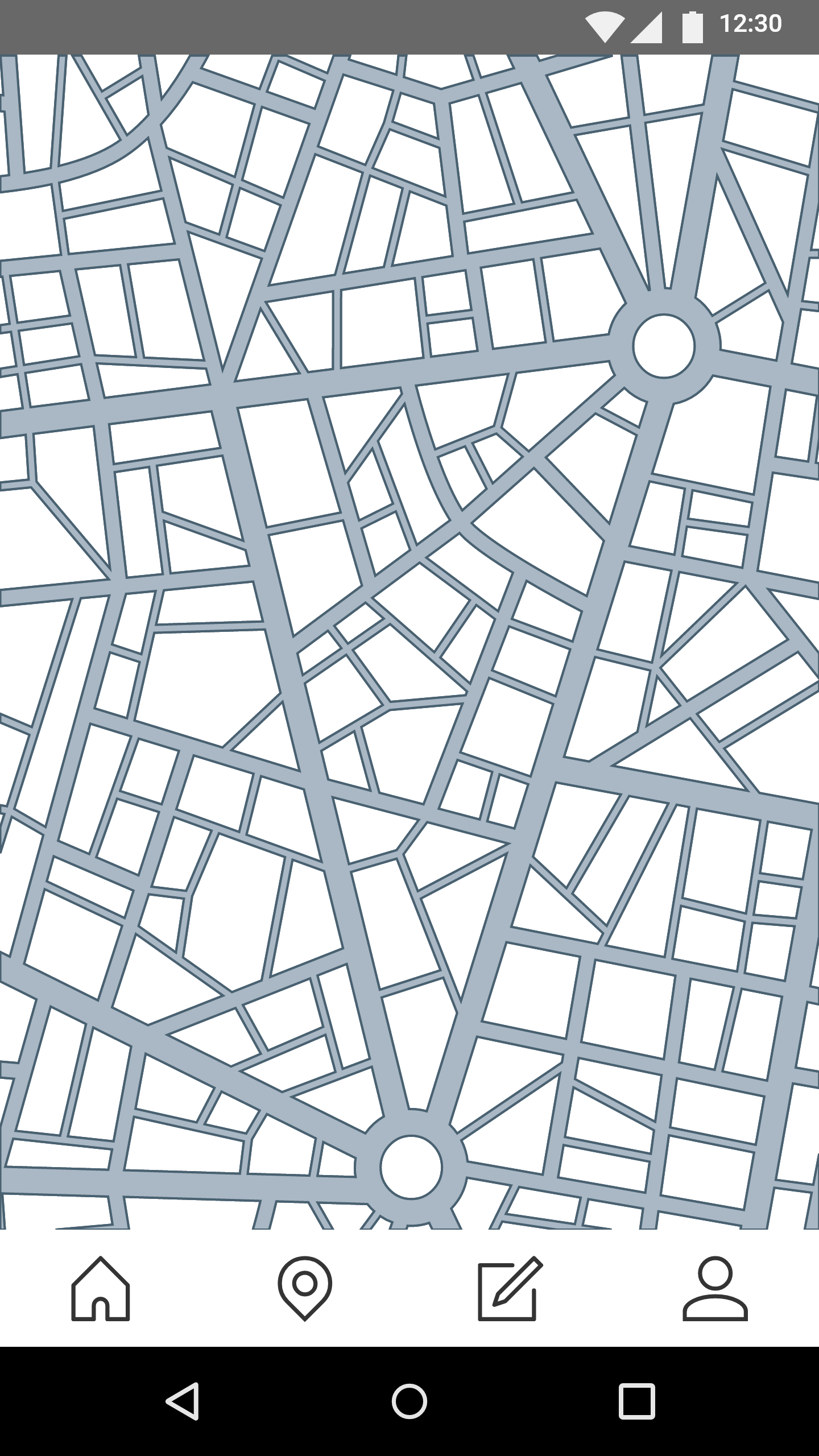
map view

list view of events

Experimenting with a hamburger menu
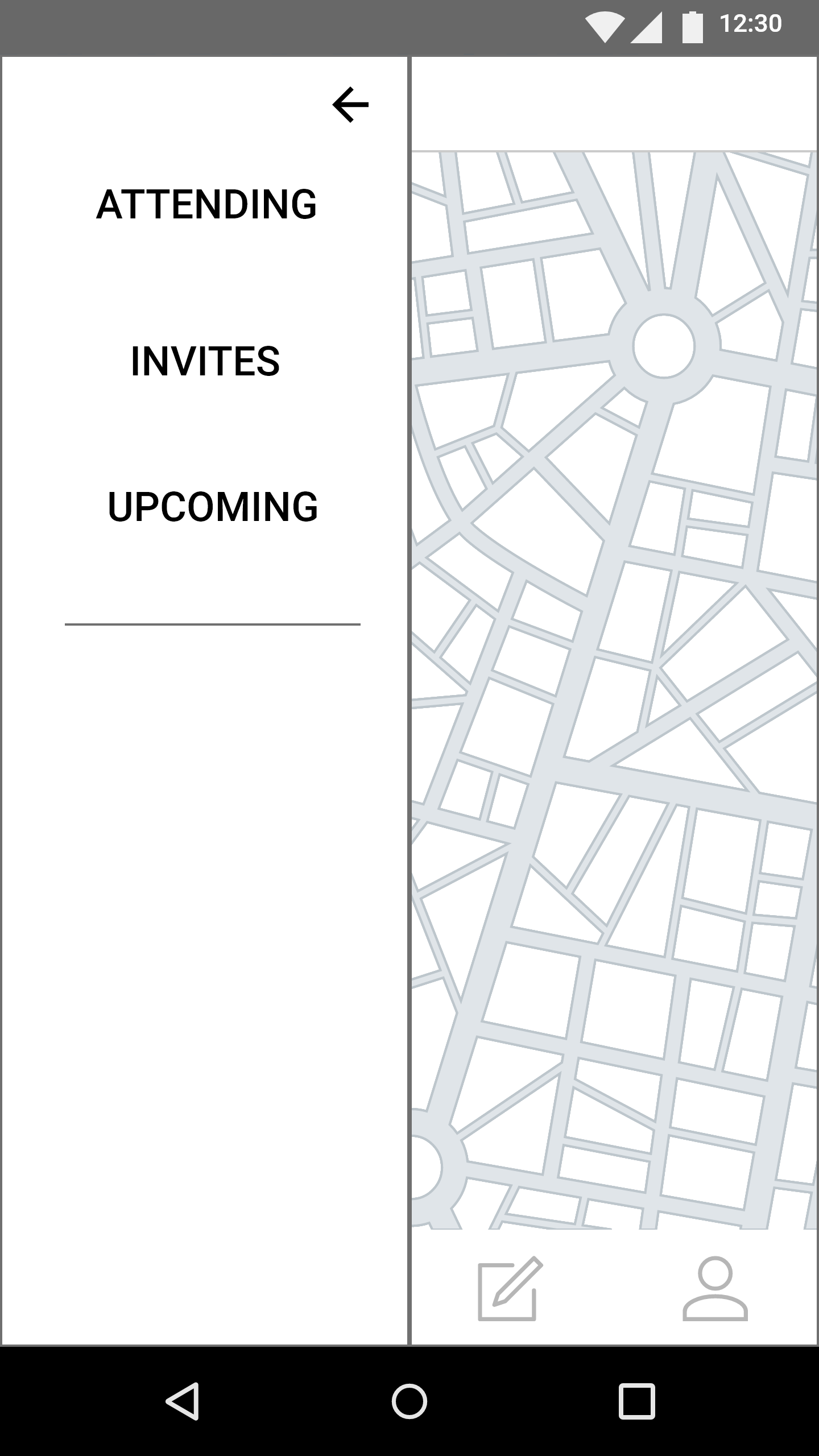
expanded menu
The home page ended up being somewhat complex, so I referenced Material Design to give the UI a stronger sense of visual hierarchy. It was important to me that the pop-up information be understandable and usable despite the complex background information from the map, and I found the Material guidelines worked the best to communicate the depth of the different elements.
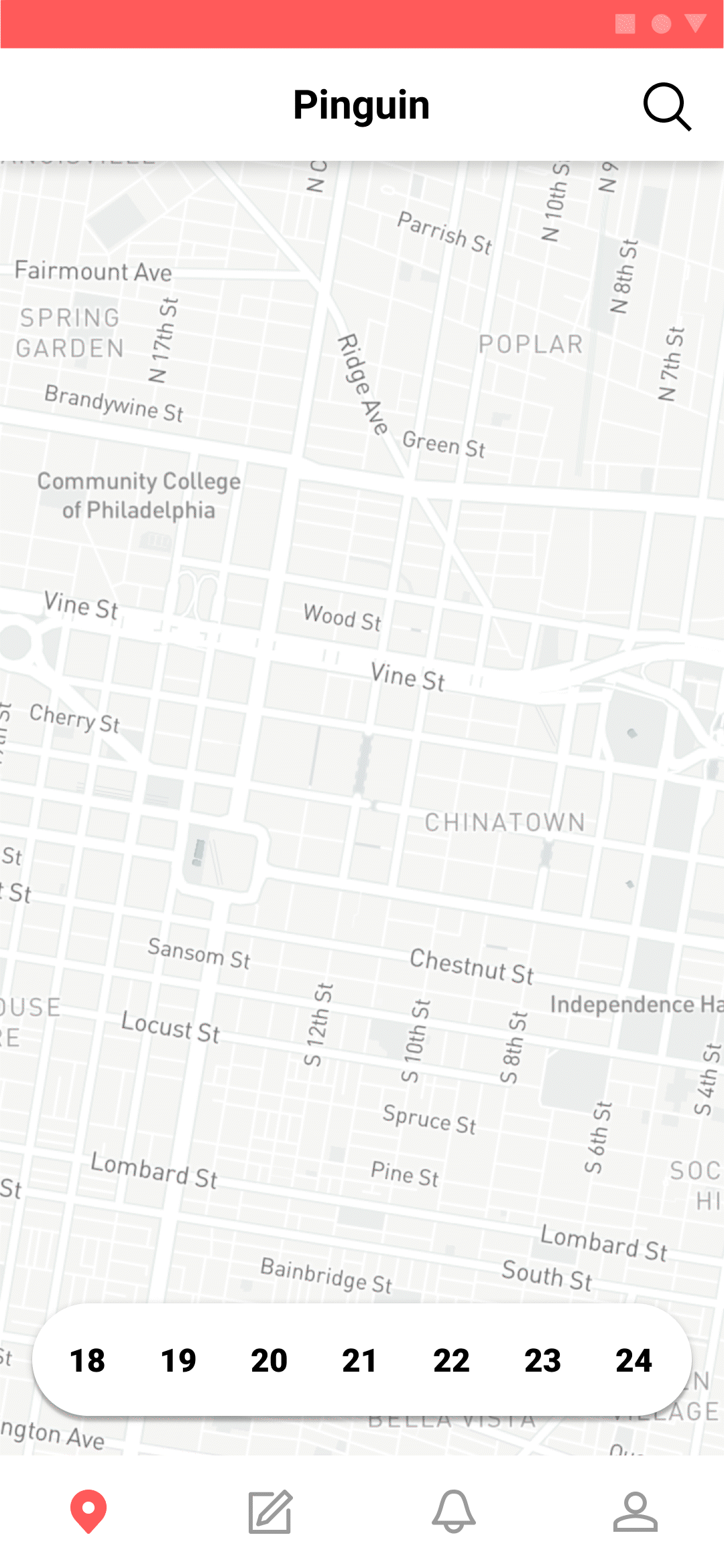
a map for the home view with a date selector above the taskbar.
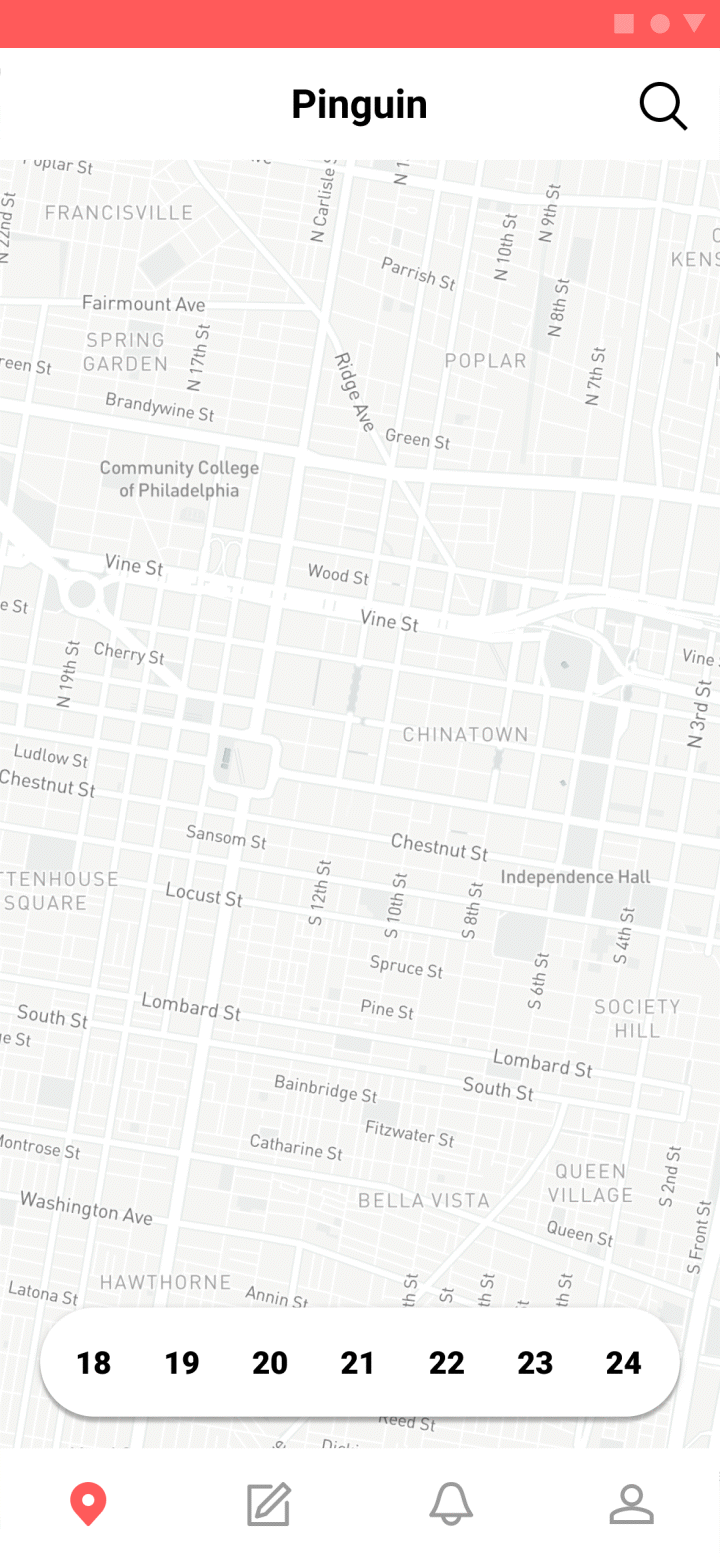
demonstration of selecting different dates
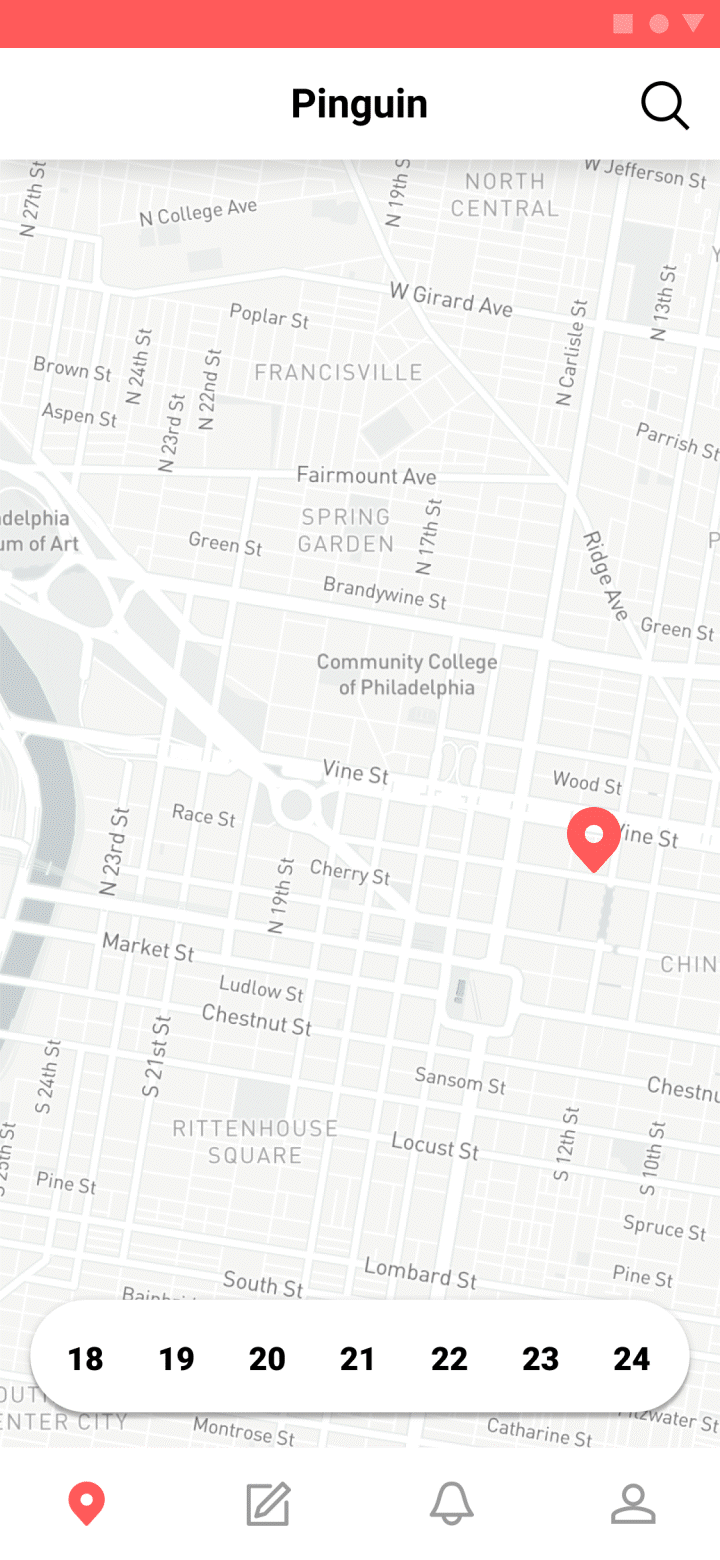
event nodes pop up to display details about the event